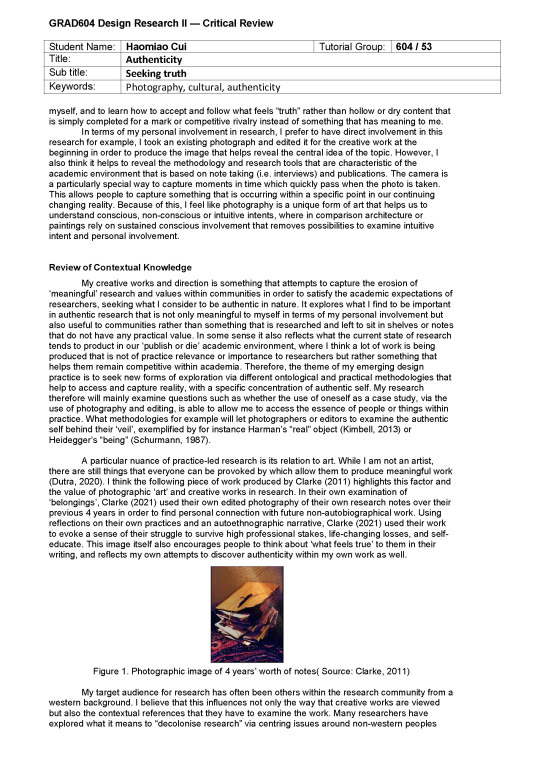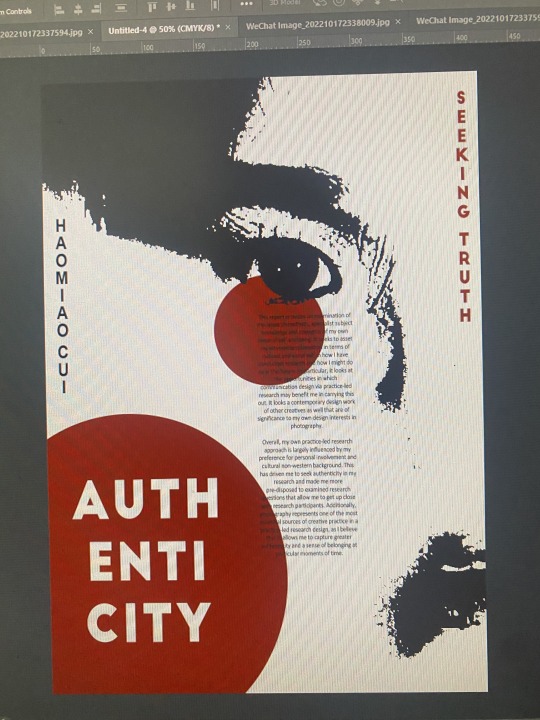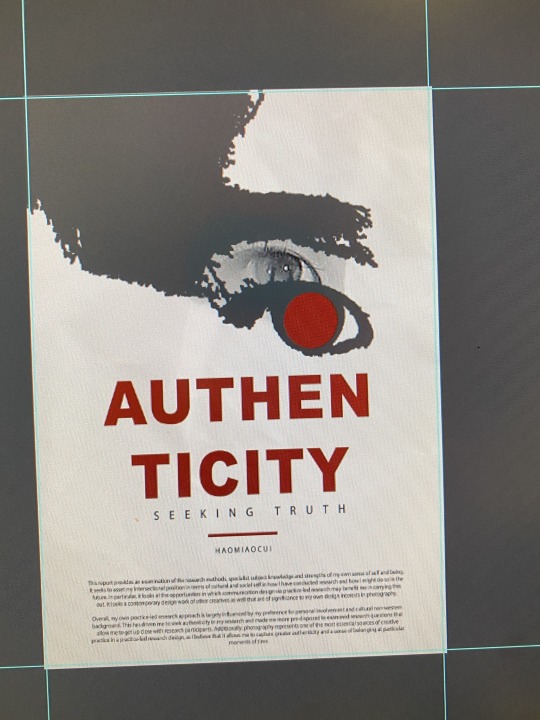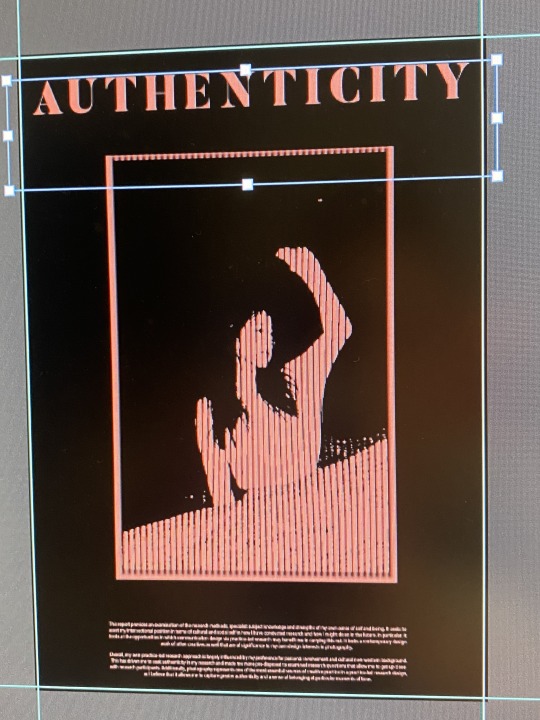Photo

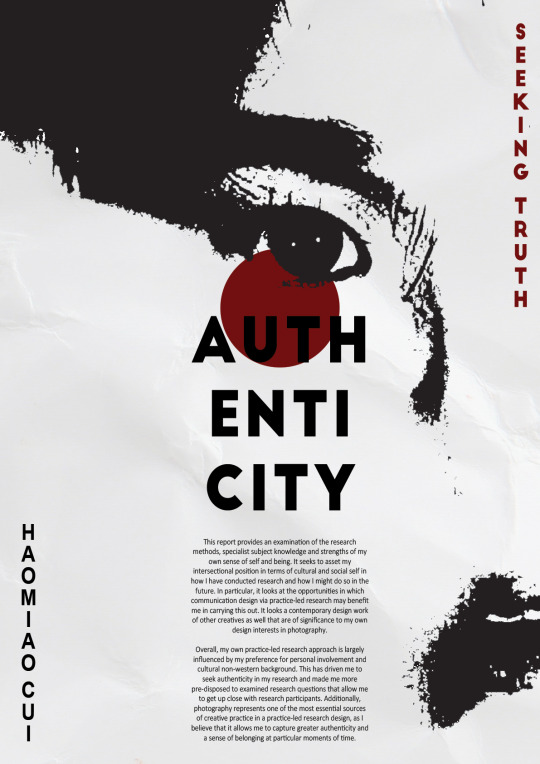



Finally, I imported what I did in Photoshop into AI, and used the ink splash effect in the brush to embellish the poster.
0 notes
Photo

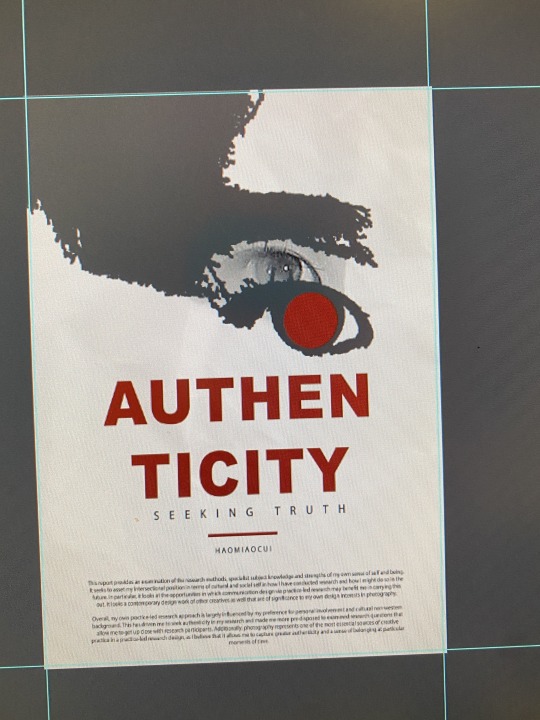


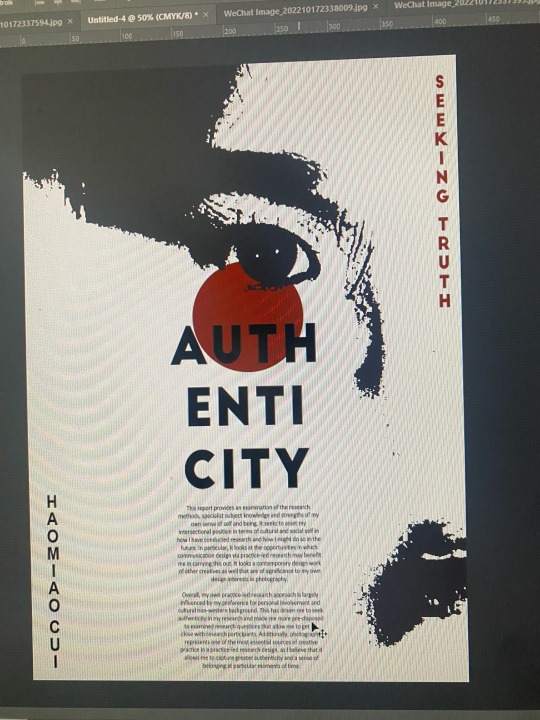
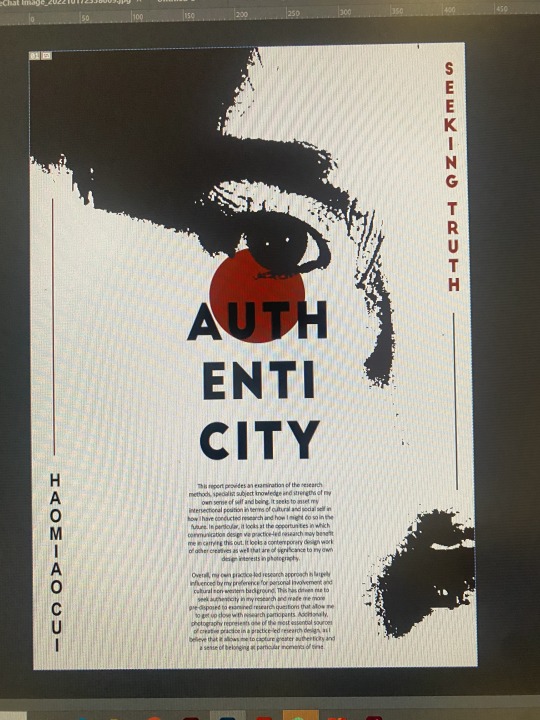

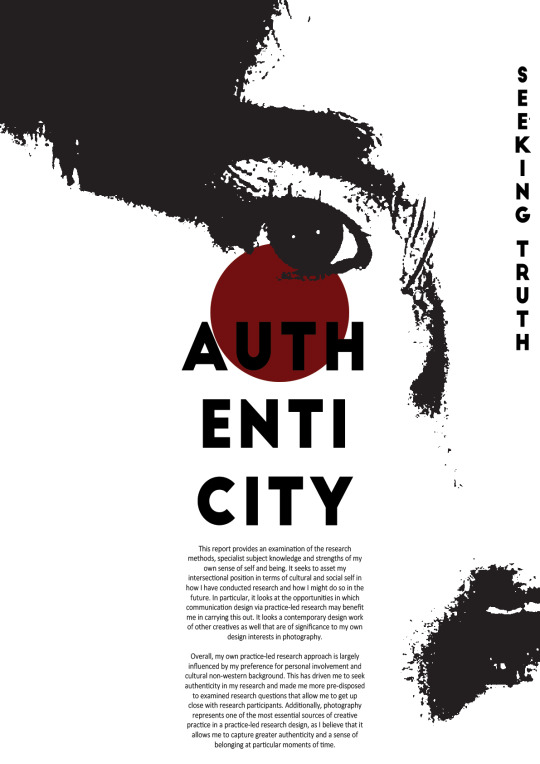

I think this is the most successful time I have tried red element posters. After asking my friends and family around me, they think this can bring the best visual effect. After the photo is extracted with high contrast, it looks like an ink painting. , which is the most classic painting method of Orientals (China). In ancient China, the circle was an important cultural symbol. It represents harmony, the balance of the yin and yang and the duality of nature, which is an essential part of Daoist and Chinese medical philosophies. The embellishment of the red circle also makes the overall look Not so monotonous up there.
0 notes
Quote
Chinese culture, takes circular integrity as the basis of its value. An individualis incorporated into the integrity of the whole. The center of the circle represents the community's interests and serves as the common objective of all its individual members. The individual exists in the community and finds the meaning of his existence through it. An individual in isolation has no meaningful existence.
https://www.theosophical.org/publications/quest-magazine/1286-lines-and-circles-west-and-east
0 notes
Photo


This is the same photo of mine that was extracted with high contrast in black and white. I like the abstract feel of this eye, but I tried to use red elements in it and it didn't look good. Although blue is more harmonious in typography, it is It doesn't give me the feeling of a non-Western perspective.
0 notes
Photo

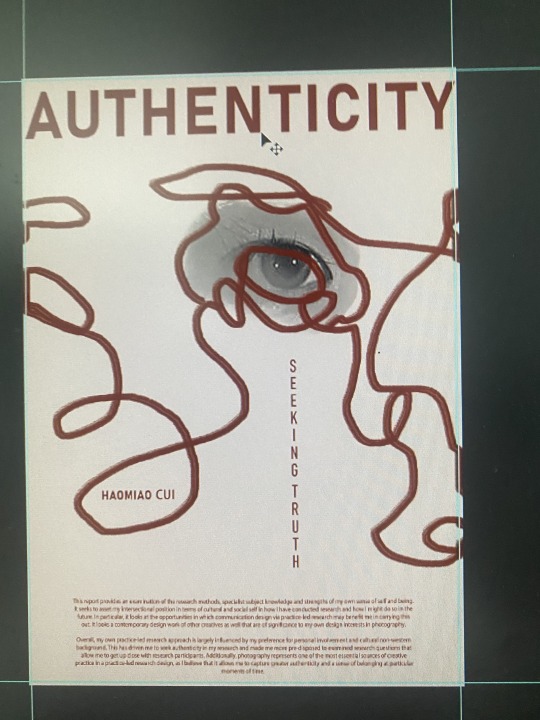


I cropped my photos to focus on the eyes, because I wanted to do abstraction from a non-western perspective andcapture reality. But the random lines are not ideal and don't reflect the theme, so I still need to improve.
0 notes
Quote
Eastern and Asian cultures
Red is the colour of happiness, joy and celebration. It is the choice of colour worn by brides on their wedding day as it is considered to bring luck, long life and happiness. Chinese restaurants often use this colour in America as it is believed to bring luck and happiness.
https://www.bergerpaints.com/imaginecolours/colour-culture/colours-and-their-different-meanings-around-the-world
0 notes
Text
Conclusion
In conclusion, I think that the key insight into my practice-led design is my level of personal involvement and how I approach creative works in related to research. As highlighted in this paper, my strong tendency for perfectionism and personally overseeing research has made direct methods such as interviewing and personal creations much more appealing towards me in research design. However, this has also meant that from a practice-led research perspective, I am much more inclined to use methods such as photography where I can personally capture and edit images that are produced in the movement. Images that capture a specific point in our dynamic time periods that can reveal both conscious and un-conscious constructions in a way that simply reproducing paintings or sculptures might find difficult. In addition, I have a strong desire to incorporate my own authenticity in my research, particularly in relation to myself and my audience members that will have their own interpretation of my works. Therefore, the future opportunities that I see in terms of possible research questions lie in areas where I am able to undertake a combination of creative and qualitative research examining issues pertaining to belonging and authentic in-depth insights.
0 notes
Text
Review of contextual knowledge
My target audience for research has often been others within the research community from a western background. I believe that this influences not only the way that creative works are viewed but also the contextual references that they have to examine the work. Many researchers have explored what it means to “decolonise research” via centring issues around non-western peoples (Thambinathan et al., 2021). As a non-westerner myself, I feel like as part of my research process I also need to be considering the perspective of non-western audiences as well, since I may not always be staying within a Western country in the future. This is also related to my exploration of authenticity, as my own background should drive my methodologies, particularly in terms of who my target audience is likely to be in the future. One of the characteristics of a non-western audience is their non-linear perspective. As Boddy-Evans (2019) highlighted, western understanding of art is typically linear, which uses straight lines to figure out or plot where things need to go. As a consequence, it is much more direct and less nuanced. However, a non-western perspective is often less linear, and thus can interpret the context and meaning behind more abstract constructions. I think that this is an important point to consider in research as well, since it means that in the future as I come up with new research topics, I should take into consideration a non-linear approach where I go from one topic or another based on what insight is grained instead of a clearly planned out multiple step research process. This will allow for a much more dynamic form of research, and be better after to produce insights that are more relevant to the insights gathered rather than an initial over-arching plan based on the need for order or perfectionism etc.
0 notes
Text
Review of contextual knowledge
My creative works and direction is something that attempts to capture the erosion of ‘meaningful’ research and values within communities in order to satisfy the academic expectations of researchers, seeking what I consider to be authentic in nature. It explores what I find to be important in authentic research that is not only meaningful to myself in terms of my personal involvement but also useful to communities rather than something that is researched and left to sit in shelves or notes that do not have any practical value. In some sense it also reflects what the current state of research tends to product in our ‘publish or die’ academic environment, where I think a lot of work is being produced that is not of practice relevance or importance to researchers but rather something that helps them remain competitive within academia. Therefore, the theme of my emerging design practice is to seek new forms of exploration via different ontological and practical methodologies that help to access and capture reality, with a specific concentration of authentic self. My research therefore will mainly examine questions such as whether the use of oneself as a case study, via the use of photography and editing, is able to allow me to access the essence of people or things within practice. What methodologies for example will let photographers or editors to examine the authentic self behind their ‘veil’, exemplified by for instance Harman’s “real” object (Kimbell, 2013) or Heidegger’s “being” (Schurmann, 1987).
A particular nuance of practice-led research is its relation to art. While I am not an artist, there are still things that everyone can be provoked by which allow them to produce meaningful work (Dutra, 2020). I think the following piece of work produced by Clarke (2011) highlights this factor and the value of photographic ‘art’ and creative works in research. In their own examination of ‘belongings’, Clarke (2021) used their own edited photography of their own research notes over their previous 4 years in order to find personal connection with future non-autobiographical work. Using reflections on their own practices and an autoethnographic narrative, Clarke (2021) used their work to evoke a sense of their struggle to survive high professional stakes, life-changing losses, and self-educate. This image itself also encourages people to think about ‘what feels true’ to them in their writing, and reflects my own attempts to discover authenticity within my own work as well.
0 notes
Photo


Poster idea
The research design I chose was photography, so for the poster design I used my own shot as the base.
0 notes
Text
Positioning the research
Practice-led research is an important component of communication design. As Smith and Dean (2009) noted, creative works can themselves be considered a form of research that is able to generate detectable research output, and ‘creative practice’ (the specialised knowledge used in the engagement with art) is able to produce unique research insight into research topics. The point here is that creative practices are able to produce innovations and knowledge which are different from but complementary to traditional methods of investigation. The image shown at the start of this report demonstrates how I view my approach to research, where I tend to focus on many details in my pursuit of perfectionism, yet often become overwhelmed in my exploration for a sense of accomplishment or belonging within research. In the process of my successful undergraduate career, I have attempted to satisfy a feeling of authenticity in my work my seeking the production of not only more in-depth and difficult topics but also more with great personal relevance. Because of this, there has been a growing re-exaction of my own works and history in order to find what makes me feel myself, and to learn how to accept and follow what feels “truth” rather than hollow or dry content that is simply completed for a mark or competitive rivalry instead of something that has meaning to me.
In terms of my personal involvement in research, I prefer to have direct involvement in this research for example, I took an existing photograph and edited it for the creative work at the beginning in order to produce the image that helps reveal the central idea of the topic. However, I also think it helps to reveal the methodology and research tools that are characteristic of the academic environment that is based on note taking (i.e. interviews) and publications. The camera is a particularly special way to capture moments in time which quickly pass when the photo is taken. This allows people to capture something that is occurring within a specific point in our continuing changing reality. Because of this, I feel like photography is a unique form of art that helps us to understand conscious, non-conscious or intuitive intents, where in comparison architecture or paintings rely on sustained conscious involvement that removes possibilities to examine intuitive intent and personal involvement.
0 notes
Text
Positioning the Researcher
My own history in academic has primarily been in China, where there is a strong focus on scientific performance (Fu et al., 2011). This was only further reinforced at the undergraduate level of study where I needed to compete with a large population of other students in order to simply get into university. As a consequence, in my own practice I tend to be highly competitive, and academia is where I believe I developed this competitive tendency. One of the benefits I have found from having a competitive drive is that it helps influence my learning through increased physical and mental effort. Indeed, studies have shown that the social motivation of competing peers can lead students to working harder at their tasks (DiMenichi & Tricomi, 2015). As a consequence, a large part of my sense of self comes from my competitive nature, and I have always see the carrying out of research as a competitive practice as well. For example, gaining grants or recognition from research ultimately requires a researcher to compete with research produced by other faculty members and topics. As a result, my own design interests are largely motivated by what is popular in any period and will likely draw the most interest.
A belief that I have about my work is that I should work with it closely or together with participants in order to being able to maintain control. Therefore, in my own practice and research I tend to want to involve myself more significantly in my work rather than simply be a distant overseer. For example, qualitative research allows researchers to work intimately with participants or other research subjects by allowing them to get close to the thoughts and feelings of individual subjects (Sutton & Austin, 2015). Thus, in order to achieve greater personal involvement which I believe is what researchers should do, I tend to choose prefer qualitative forms of research such as interviews and in-depth studies that allow me to personally explore different topics in practice. In the study of communication design and practice-led research for instance, I find it particularly important to be able to create visual formats based on detailed examination of target audiences that have been based on a high level of personal involvement.
0 notes

